 |
In 2005, a film collector donated about 800 reels of film to the Fukuoka City Public Library Film Archive. After sorting out the donated material, it was discovered that the film collection included "The Princess of Baghdad", Japan's very first post-war feature animation, regarded as extremely rare within the film industry. The National Museum of Modern Art Tokyo National Film Center also has "The Princess of Baghdad" in its collection. However after much research, it was discovered that the version donated to our archive contained much material missing from the National Film Center version, and that in total, our version was longer. For this reason, a collaborative project was begun between the Fukuoka City Public Library Film Archive and the National Museum of Modern Art Tokyo National Film Center to produce the most comprehensive version of this rare animation. What you will see here (procedures 1-8) is a procedural account on the part of the Fukuoka City Public Library Film Archive to restore this piece of animation. The restoration effort in Fukuoka was performed solely by the staff of the Fukuoka City Public Library Film Archive, without relying on subcontracted professional help. |
|---|
|
This old 35mm film, suffering from a case of hydrolysis, was one of the 800 reels of positive 35mm film donated to the Fukuoka City Public Library Film Archive by a film collector in 2005. "The Princess of Baghdad" was included in this donated collection. |
|
|---|---|
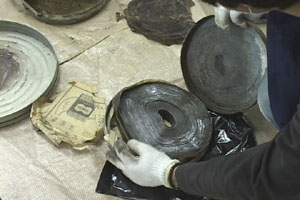 |
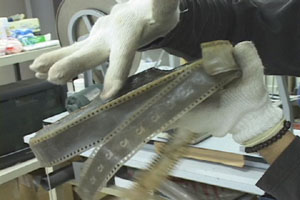 |
| We first rewound the film while applying alcohol to the sides of the film. Because the odor of acetic acid was so intense, we had to wear masks and goggles. |
|
|---|---|
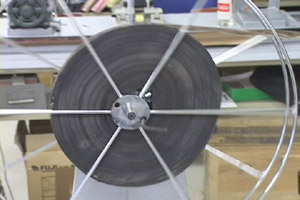 |
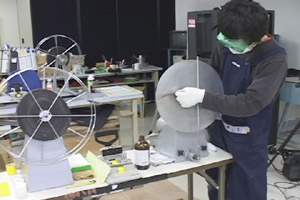 |
| What could be done to prevent the strong odor of acetic acid from permeating to the outside? We came up with the idea of vacuum packaging the film, so we decided to give it a try. We think it was effective, to some degree. |
|
|---|---|
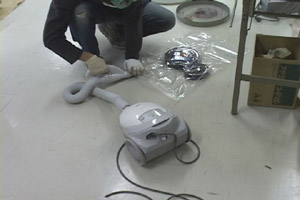 |
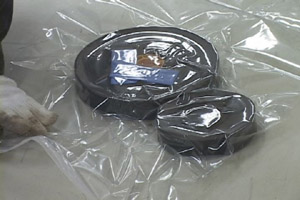 |
| The vacuum packed film was then stored inside our film vault. Our film vault is set to preserve films at 5 degrees centigrade with a humidity factor of 40%. |
|
|---|---|
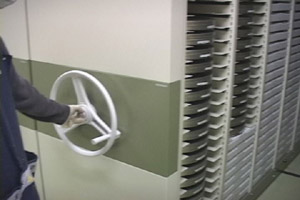 |
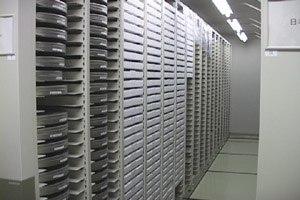 |
| In order to look at the visual images of the film through a film viewer, the film had to go through repair work. We subjected each reel to careful and detailed repair work. The repair tape used for film perforation which you see here is getting more and more difficult to obtain in Japan. |
|
|---|---|
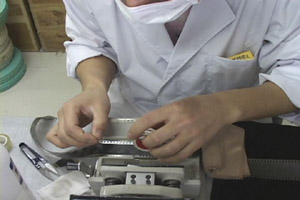 |
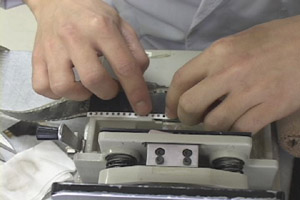 |
| We are a library blessed with a rich supply of publications. Here we are getting information on the history of "The Princess of Baghdad" through old issues of Japanese film magazines. |
|
|---|---|
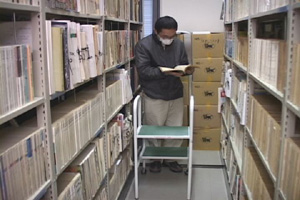 |
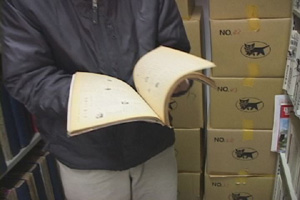 |
| After our repair work, the film which we found in such filthy condition, transformed itself into something that baffled our eyes. Yet this was only its outward appearance. We then had check the actual visual image. |
|
|---|---|
 |
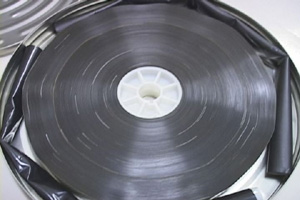 |
We
put alot of repair marks to this film, but we didn't see any perforation
shrinkage. Most important, the film ran through projection without any
problem. Visual images were confirmed in this way to compare the National
Film Center's version to our version of "The
Princess of Baghdad", and based on such comparison,
a collaborative project was launched between the National Film Center
and the Fukuoka City Public Library Film Archive to use footage of both
versions to create the longest version of this animation to date. |
||
|---|---|---|
 |
 |
 |
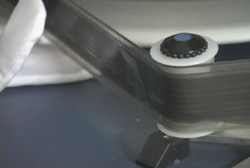 |
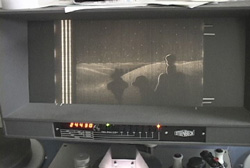 |
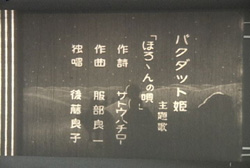 |